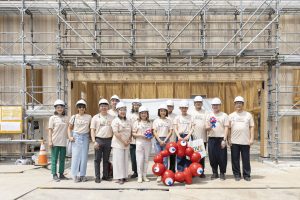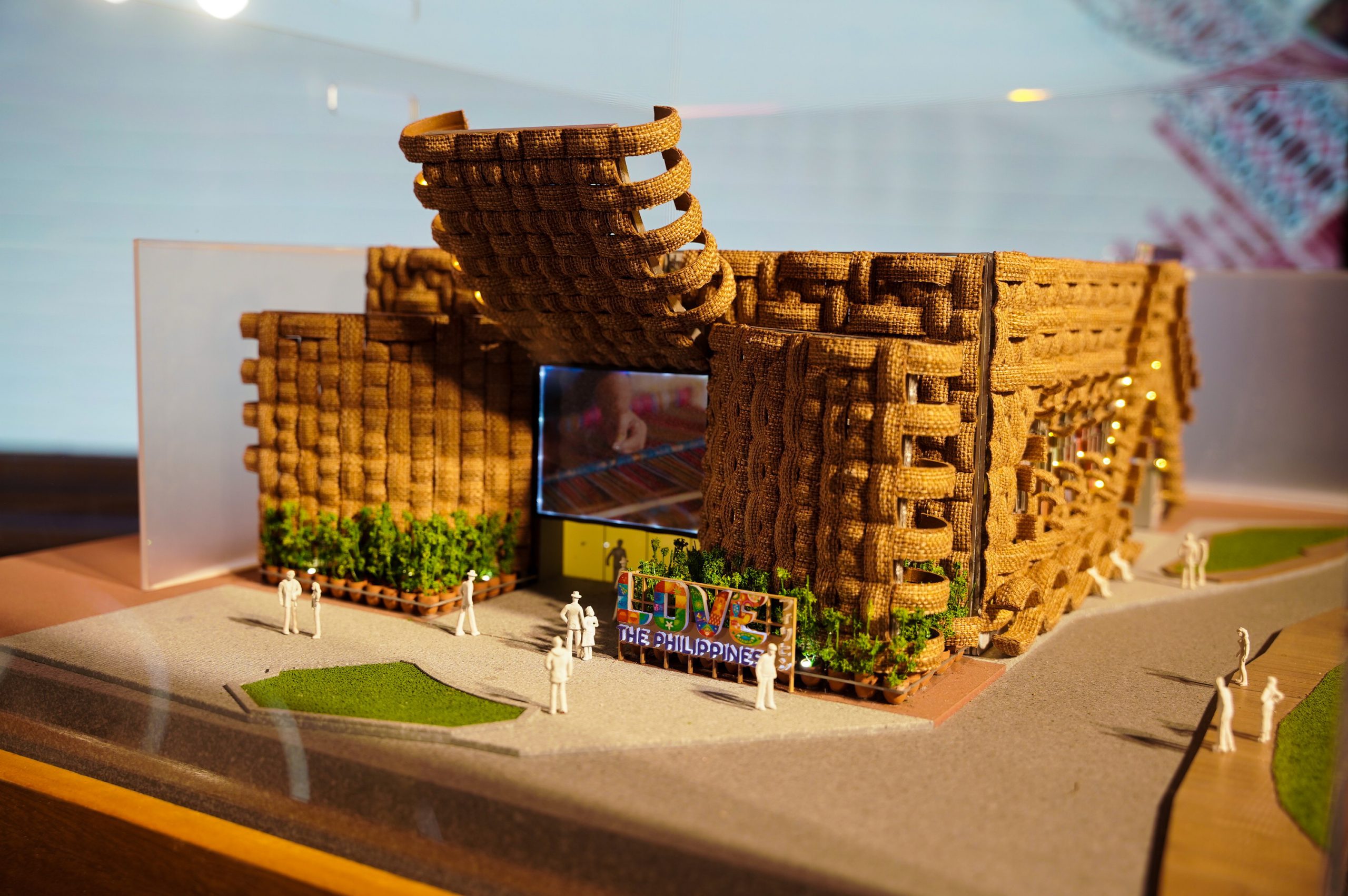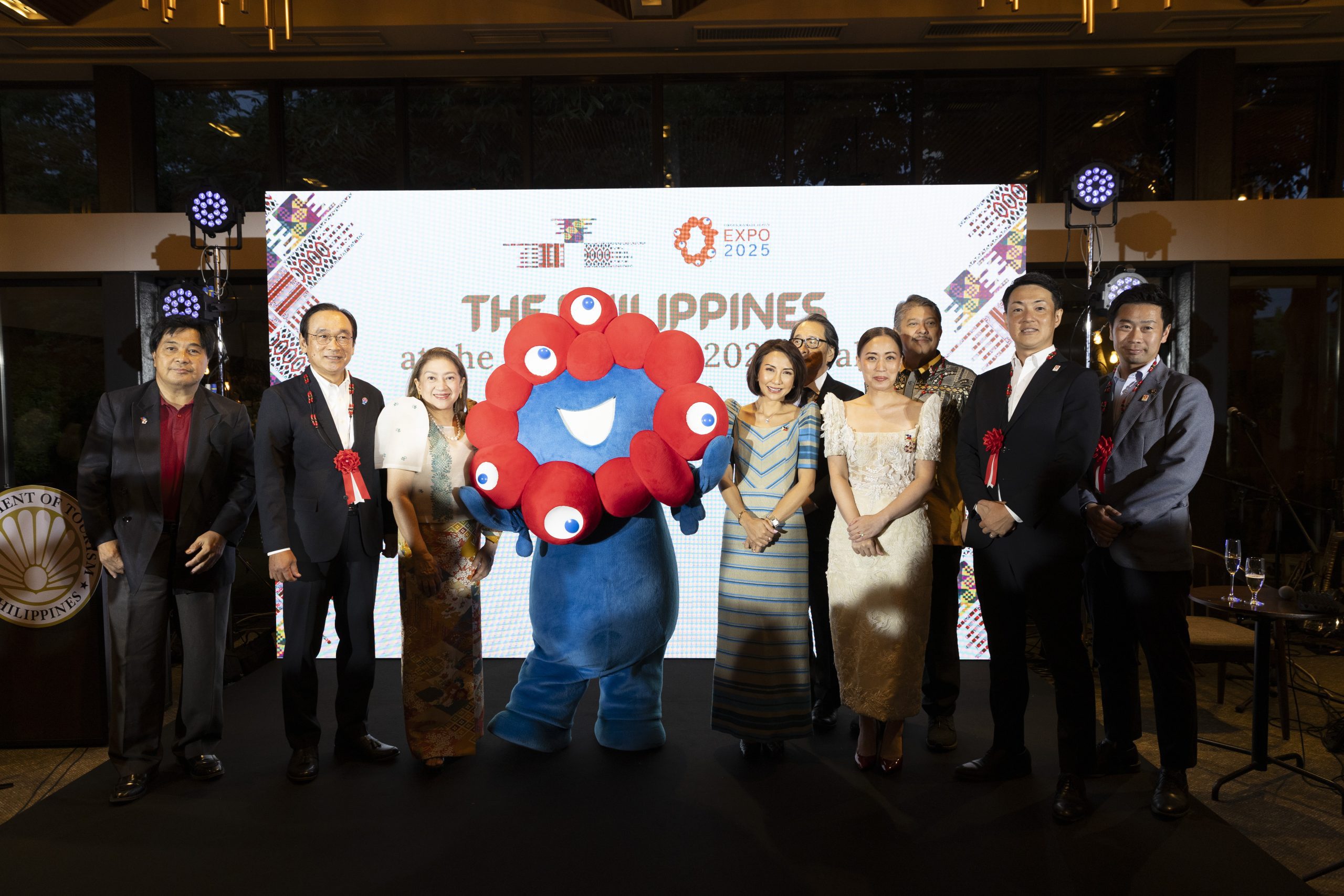OSAKA – The Philippines has unveiled its plans for a collaborative, innovative, and sustainable pavilion at the 2025 World Exposition, set to take place on Yumeshima Island in Osaka from April 13 to Oct. 13 next year.
The Philippine Pavilion will feature the first-ever interactive live performance façade, showcasing traditional dance and crafts that embody the Filipino spirit of creativity and connection. To celebrate diversity, the façade will also display 212 handwoven textiles, marking the largest collaboration of weavers in a single project. Each piece presents a unique narrative, reflecting the rich heritage, traditions, and art of each community. The pavilion will also convey the story of sustainability, with plans for an upcycled “second life” at the National Museum in the Philippines after the Expo.
“All of these features were lovingly put together by our design team. We cannot wait for you to see the full glory of our pavilion very soon,” said Tourism Promotions Board (TPB) Chief Operating Officer Maria Margarita Montemayor Nograles at a press conference following the international press launch and concept presentation at The Garden Oriental Osaka on July 24.
Architect Carlo Calma, who leads the design team, echoed the sentiment of anticipation.
“I think the beauty of the woven is really these thousand of pieces of units of rattan that’s weaving and twisting and it’s kind of the labor of love of handicraft of the Philippines,” he said.
Tourism Secretary Christina Garcia Frasco, who also serves as Commissioner-General of the Philippine Organizing Committee (POC) for the Expo, emphasized the pavilion’s dual focus on economy and sustainability.
“The Philippine Pavilion seeks to be as economical as it is sustainable, recognizing that the Philippines and all nations must invest if it is to expect returns in terms of trade, investment, and tourism,” she said.
Frasco noted the pavilion’s potential to boost tourism.
“We expect that the presence of the Philippines at the Expo will further grow the visits of the Japanese to the Philippines, which was pegged at over 300,000 in 2023, and which we project to exceed half a million by 2025. That, of course, will translate to visitor receipts that will contribute hundreds of millions to our economy,” she added.
Philippine Ambassador to Japan Mylene Garcia-Albano praised the collaborative efforts between Japan and the Philippines.
“I think it was really the invitation of the Japanese government for us to participate and the hard work of our Department of Tourism and our Tourism Promotions Board that was able to make this happen. It’s been a while, a lot of talks have been going on, but there have been constant interactions, so through their [Frasco and Nograles] personal attention to this, we finally see the concept and the actual model of the pavilion,” she told the Filipino-Japanese Journal.
With the theme, “Nature, Culture & Community, Woven Together for a Better Future,” or simply “Woven,” visitors of the 600-square-meter pavilion can enjoy an immersive experience celebrating Filipino creativity, craftsmanship, and cultural heritage.
A topping out ceremony for the Philippine Pavilion was held on July 25. The building is scheduled to be completed by March 2025.
Source: Filipino-Japanese Journal


